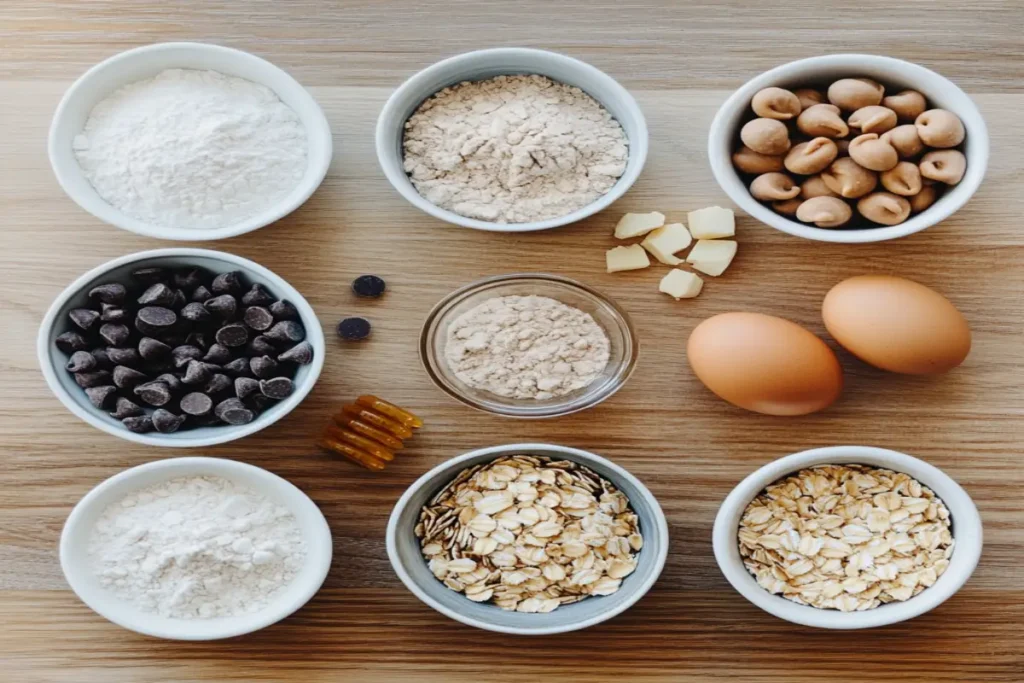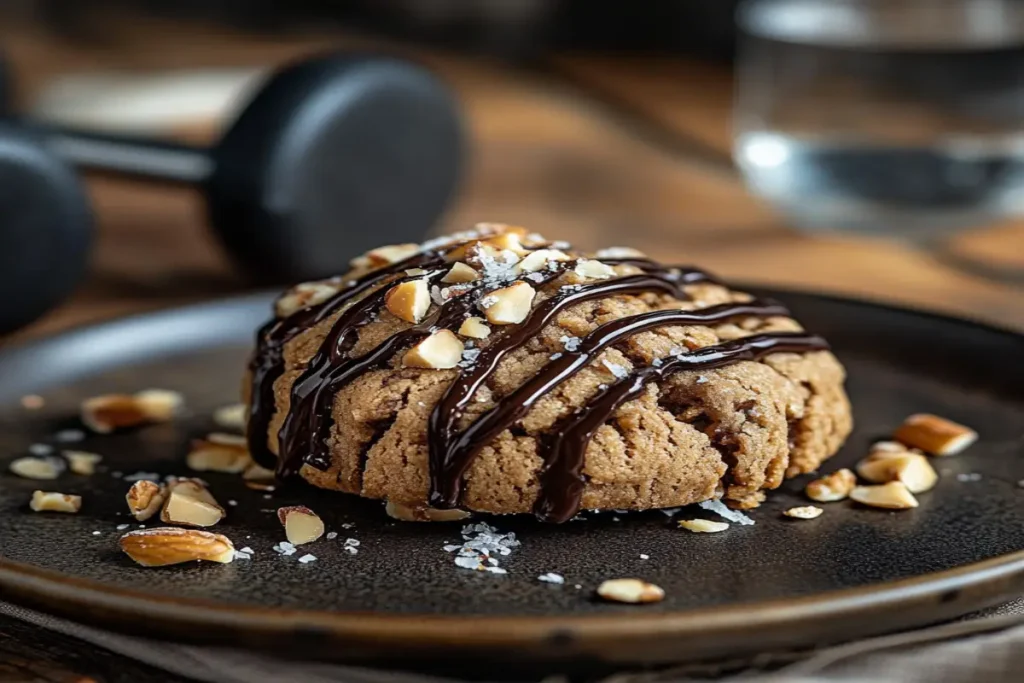Why Add Protein to Your Cookies?
Adding protein to cookies is a practical way to make a traditionally indulgent treat more nutritious. When you incorporate protein into cookies, they not only satisfy your sweet cravings but also support your daily nutritional goals. Protein is essential for muscle repair, immune function, and maintaining energy levels, making it a vital nutrient to include in everyday snacks.
Protein-enriched cookies are ideal for athletes, busy professionals, and even children who need an energy boost. Transitioning your recipes to include protein doesn’t require drastic changes; subtle adjustments can significantly improve the protein content. Additionally, using protein-rich ingredients can enhance the cookie’s texture and flavor, offering a wholesome alternative to store-bought snacks.
By learning how to increase protein content in cookies, you can create a balanced snack that provides both satisfaction and sustenance. It’s an excellent opportunity to experiment with flavors while achieving a more health-conscious lifestyle.
Table of contents
Benefits of High-Protein Cookies
High-protein cookies are more than just a tasty treat; they’re a step toward healthier snacking. These cookies help keep you fuller for longer, reducing the urge to consume empty-calorie snacks. This is especially useful for those managing weight or looking to maintain consistent energy throughout the day.
Moreover, protein aids in stabilizing blood sugar levels, making high-protein cookies a smarter choice for individuals with blood sugar concerns. They can serve as a post-workout snack, replenishing amino acids and supporting muscle recovery. Unlike standard cookies, these treats are less likely to cause energy crashes, thanks to their nutritional balance.
When considering how to increase protein content in cookies, it’s important to remember that protein can also add depth to flavors. For example, nut-based ingredients or dairy proteins can enhance richness, making the cookies even more enjoyable. This dual advantage of flavor and health is why high-protein cookies are becoming increasingly popular.
Choosing the Right Protein Powder for Cookies

Selecting the appropriate protein powder is crucial when learning how to increase protein content in cookies. Not all protein powders perform the same, and their properties can significantly affect the texture, flavor, and nutritional profile of your cookies.
- Whey Protein: Ideal for soft and chewy cookies due to its excellent solubility and neutral flavor.
- Casein Protein: Adds a creamy texture and works well in recipes that require a denser consistency.
- Plant-Based Proteins: Options like pea, rice, or hemp protein are excellent for vegan recipes but may slightly alter the flavor.
When choosing a protein powder, avoid those with artificial sweeteners or added fillers that could impact the final taste. Additionally, balance the amount of powder with other wet ingredients to prevent the cookies from becoming dry or crumbly. By understanding these nuances, you can achieve the perfect balance of taste and nutrition.
Incorporating Natural Protein Sources in Cookies
Using natural ingredients is a straightforward way to boost the protein content in cookies while keeping them wholesome. Ingredients such as nuts, seeds, and legumes can be seamlessly added to traditional recipes.
- Chopped nuts like almonds, walnuts, or pecans not only increase protein but also add a delightful crunch.
- Seeds such as chia, flax, and sunflower are rich in protein and healthy fats.
- Legumes, like black beans or chickpeas, can be blended into the dough for a soft texture and a protein punch.
Incorporating these ingredients ensures that the cookies are nutrient-dense without compromising taste. For best results, pair these natural sources with complementary flavors—for instance, chocolate chips with walnuts or cranberries with sunflower seeds. This approach aligns with the goal of making cookies both healthy and flavorful.
Using Nut Butters to Boost Protein Content
Nut butters are an excellent way to increase the protein content of cookies while adding a creamy texture and rich flavor. Options like almond butter, peanut butter, and cashew butter are versatile and easy to incorporate into cookie recipes.
When using nut butters, replace a portion of the regular butter or oil with your chosen nut butter. This not only increases protein but also enhances the overall nutritional value by introducing healthy fats and vitamins. Additionally, nut butters pair exceptionally well with ingredients like chocolate, oats, and dried fruits.
For those concerned about allergens, sunflower seed butter offers a nut-free alternative while still providing a good amount of protein. Remember to adjust the sweetness in your recipe, as some nut butters may have added sugars. This method ensures that your cookies are both satisfying and nutritious.
Adding Greek Yogurt to Your Cookie Dough
Greek yogurt is a versatile ingredient for increasing the protein content in cookies. Its creamy consistency blends easily into dough, adding moisture while contributing a significant amount of protein.
To incorporate Greek yogurt, replace a portion of the butter or oil in your recipe with an equal amount of yogurt. This substitution not only boosts protein but also reduces the overall fat content. Greek yogurt works particularly well in soft cookie recipes, such as oatmeal or pumpkin cookies, where its tangy flavor complements the other ingredients.
Additionally, Greek yogurt pairs nicely with flavors like vanilla, lemon, and berries, allowing you to create unique cookie variations. Opt for plain, unsweetened yogurt to maintain control over the sweetness of your recipe. By experimenting with Greek yogurt, you’ll discover a simple and effective way to make your cookies healthier.
Substituting Flour with Almond or Coconut Flour
Replacing traditional flour with almond or coconut flour is an effective strategy for increasing the protein content in cookies. Both of these alternatives are naturally high in protein and gluten-free, making them ideal for those with dietary restrictions.
- Almond Flour: Made from finely ground almonds, it adds a nutty flavor and a soft texture to cookies.
- Coconut Flour: While slightly denser, it’s rich in fiber and protein, requiring additional moisture in recipes.
When using these flours, it’s important to adjust the liquid ingredients in your recipe, as they absorb moisture differently than wheat flour. A combination of almond or coconut flour with other protein-rich ingredients, such as eggs or protein powder, can result in a well-balanced cookie. These flours not only enhance the nutritional profile but also add unique flavors that elevate the overall cookie experience.
How to Use Chickpea Flour for Protein-Rich Cookies
Chickpea flour, derived from ground chickpeas, is a fantastic ingredient for those wondering how to increase protein content in cookies. This gluten-free flour is rich in protein and fiber, making it a nutritious addition to any recipe.
When using chickpea flour, replace up to half of the all-purpose flour in your recipe to maintain the right texture. Its slightly nutty flavor pairs well with chocolate, spices, and dried fruits. Additionally, chickpea flour enhances the dough’s binding properties, reducing the need for eggs or other binders in vegan recipes.
To achieve the best results, combine chickpea flour with a small amount of baking powder to ensure the cookies remain light and tender. By incorporating this ingredient, you’ll create cookies that are both delicious and nutrient-packed, perfect for any occasion.
Adding Seeds like Chia and Flax for Extra Protein
Chia and flax seeds are excellent ingredients for those aiming to increase the protein content in cookies. These seeds are not only protein-rich but also packed with omega-3 fatty acids and fiber, making them a great addition to any recipe.
- Chia Seeds: Their ability to absorb liquid creates a gel-like texture, helping to bind cookie dough in vegan recipes.
- Flax Seeds: Ground flax seeds are especially versatile, acting as both a protein booster and a replacement for eggs in baking.
To incorporate these seeds, add a few tablespoons to your cookie dough. They pair well with oats, chocolate chips, or even dried fruits, adding a subtle crunch and nutty flavor. Including chia and flax seeds is a simple way to elevate your cookie’s nutritional profile without sacrificing taste or texture.
Mixing in Nuts and Nut Flours for Protein Enhancement
Nuts and nut flours are natural options for increasing the protein content in cookies. They add texture, flavor, and essential nutrients that make your treats healthier and more satisfying.
- Whole Nuts: Almonds, walnuts, pecans, or pistachios add a delightful crunch and a boost of protein.
- Nut Flours: Almond or hazelnut flour can replace traditional flour, providing both protein and a rich, nutty taste.
When using nuts, chop them finely for even distribution, or grind them into a coarse powder for smoother dough. Pairing nuts with complementary ingredients like chocolate or spices can enhance the flavor profile. Nut flours, on the other hand, are best combined with a bit of all-purpose flour to maintain the cookie’s structure. These simple changes can make a big difference in both taste and nutrition.
Incorporating Oats and Quinoa into Cookie Recipes
Oats and quinoa are excellent grains for those looking to increase the protein content in cookies while maintaining a hearty texture. These ingredients are naturally rich in protein and fiber, making them ideal for wholesome baking.
- Oats: Rolled or quick oats provide a chewy texture and pair well with sweet or nutty flavors.
- Quinoa: Cooked quinoa adds a soft texture and blends seamlessly into cookie dough.
Incorporate oats by substituting a portion of the flour with oat flour or adding whole oats directly to the dough. For quinoa, cook it beforehand and ensure it is completely cooled before mixing it into the recipe. These grains work well with raisins, nuts, or honey, resulting in a cookie that is as nutritious as it is delicious.
Tips for Using Protein-Rich Dairy Ingredients
Dairy ingredients are a versatile way to increase the protein content in cookies while adding moisture and flavor. Options like milk, cream cheese, and even cottage cheese can enhance your cookie recipes.
- Milk Powder: A dry ingredient that blends easily into cookie dough, adding protein without altering the consistency.
- Cottage Cheese: Its creamy texture makes it an excellent addition to soft cookies, providing both protein and richness.
- Greek Yogurt: As mentioned earlier, it’s a great substitute for butter or oil in recipes.
When using dairy ingredients, balance their moisture content with other dry ingredients to avoid overly sticky dough. These additions not only increase protein but also add depth and creaminess to the final product.
Plant-Based Protein Options for Vegan Cookies

For vegan recipes, plant-based proteins are an essential consideration when figuring out how to increase protein content in cookies. Ingredients like tofu, beans, and plant-based protein powders offer excellent alternatives.
- Silken Tofu: Adds moisture and acts as a binding agent in vegan cookie recipes.
- Beans: Pureed black beans or chickpeas blend seamlessly into chocolate-based cookies.
- Plant-Based Protein Powders: Pea, rice, or hemp protein powders are excellent for boosting protein without using animal products.
These ingredients ensure your vegan cookies are as nutritious and satisfying as their non-vegan counterparts. Experimenting with these options allows you to achieve both dietary preferences and nutritional goals.
Balancing Protein Content Without Affecting Taste
When increasing the protein content in cookies, it’s crucial to maintain their signature taste and texture. Overloading a recipe with protein ingredients can sometimes lead to dryness or an overly dense consistency.
- Use a blend of protein sources to avoid overpowering flavors.
- Add moisture-rich ingredients like Greek yogurt or mashed bananas to balance dryness.
- Pair protein-rich ingredients with sweeteners or spices to enhance the flavor profile.
By testing small adjustments and making gradual changes, you can achieve the perfect balance, ensuring your cookies are both delicious and nutritious.
Common Mistakes to Avoid When Adding Protein to Cookies
While learning how to increase protein content in cookies, avoiding common pitfalls ensures the best results. Overcompensating with protein-rich ingredients or neglecting proper proportions can compromise the final product.
- Adding Too Much Protein Powder: This can make cookies dry and overly dense.
- Ignoring Liquid Adjustments: Protein ingredients often absorb more moisture, requiring extra wet ingredients.
- Overlooking Flavor Balance: Ensure that added proteins don’t overshadow the cookie’s natural sweetness or desired flavor.
By addressing these mistakes, you can confidently create protein-packed cookies that are both tasty and satisfying.

